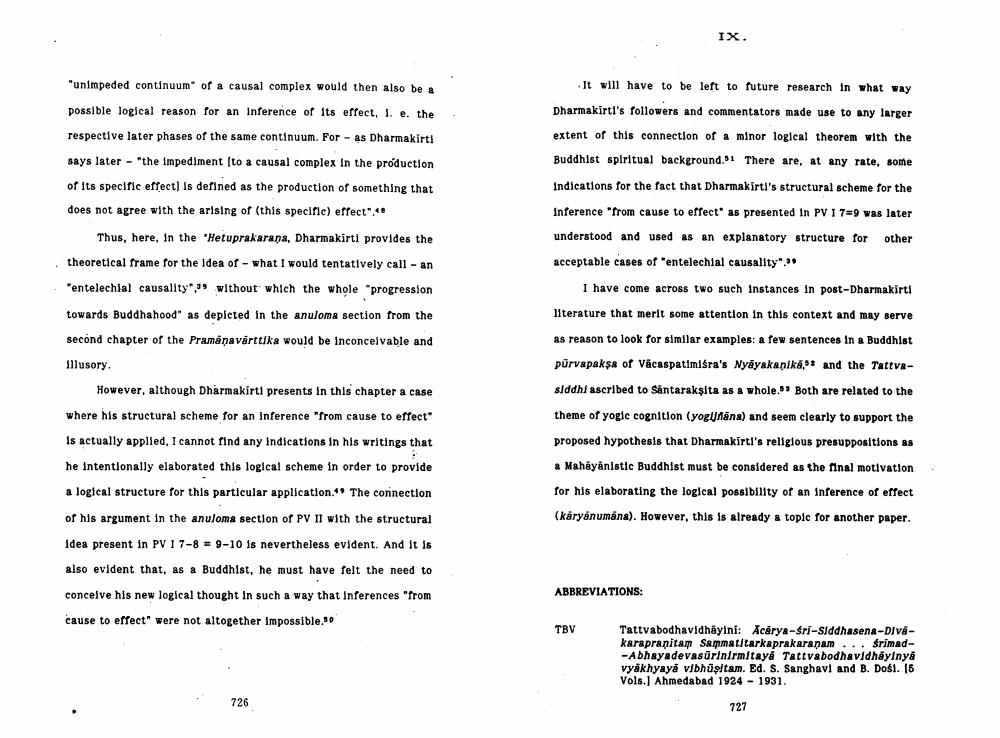________________
IX.
"unimpeded continuum
of a causal complex would then also be a
It will have to be left to future research in what way Dharmakirti's followers and commentators made use to any larger
possible logical reason for an Inference of its effect, I. e. the
respective later phases of the same continuum. For - as Dharmakirti
extent of this connection of a minor logical theorem with the Buddhist spiritual background. There are, at any rate, some
says later - "the impediment to a causal complex in the production of its specific effect is defined as the production of something that does not agree with the arising of this specific) effect"."
Indications for the fact that Dharmakirti's structural scheme for the
Thus, here, in the 'Hetuprakarana, Dharmakirti provides the theoretical frame for the idea of - what I would tentatively call - an "entelechial causality", without which the whole "progression
Inference from cause to effect' as presented in PV I 7=9 was later understood and used as an explanatory structure for other acceptable cases of "entelechial causality":
I have come across two such Instances in post-Dharmakirti
towards Buddhahood" as depicted in the anuloma section from the
literature that merit some attention in this context and may serve
second chapter of the Pramanavarttika would be inconceivable and Illusory
as reason to look for similar examples: a few sentences in a Buddhist pūrvapaksa of Vācaspatimisra's Nyāyakaniká,9+ and the Tattve
However, although Dharmakirti presents in this chapter a case
siddhi ascribed to Sántarakṣita as a whole.
Both are related to the
where his structural scheme for an inference from cause to effect"
theme of yogic cognition (yogMana) and seem clearly to support the
Is actually applied, I cannot find any Indications in his writings that
proposed hypothesis that Dharmakirti's religious presuppositions as
a Mahayanistic Buddhist must be considered as the final motivation
he intentionally elaborated this logical scheme in order to provide a logical structure for this particular application. The connection of his argument in the anuloma section of PV II with the structural
for his elaborating the logical possibility of an Inference of effect
(káryánumana). However, this is already a tople for another paper.
Idea present in PV I 7-8 = 9-10 is nevertheless evident. And it is
also evident that, as a Buddhist, he must have felt the need to conceive his new logical thought in such a way that Inferences "from cause to effect" were not altogether impossible.
ABBREVIATIONS:
TBV
Tattvabodhavidhayini: Acārya-sri-Siddhasena-Divakarapranitam Sammatitarkaprakaranam ... Srimad-Abhayadevasūrinirmitaya Tattvabodhavidháyinya vyakhyaya vibhūşltam. Ed. S. Sanghavi and B. Dośl. 16 Vols.) Ahmedabad 1924 - 1931.
726
727




